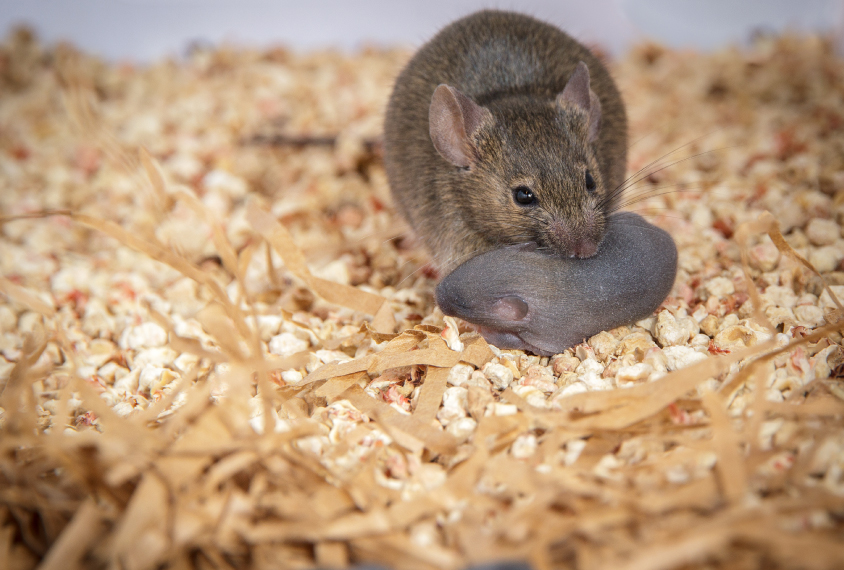Female mice missing a copy of the autism-linked gene MECP2 have a hard time heeding pups’ calls and herding litters, perhaps because of malfunctioning inhibitory neurons, according to an unpublished study presented virtually yesterday at the 2021 Society for Neuroscience Global Connectome. (Links to abstracts may work only for registered conference attendees.)
Mutations in MECP2 in people cause Rett syndrome, which is characterized by serious motor problems and, often, autism traits. Because the gene lies on the X chromosome, girls with Rett syndrome, who have two Xs, have a functional copy in about half of their cells. But boys with the syndrome, with only one X, usually do not survive infancy.
In the new work, researchers mutated MECP2 in female mice within specific brain cells: parvalbumin-positive (PV+) interneuron cells. These inhibitory cells are responsible for regulating pyramidal cells, a type of excitatory neuron.
PV+ cells, which help maintain a signaling balance in the brain, may be particularly vulnerable to MECP2 mutations, the researchers say.
Parenting troubles:
The team placed the MECP2 model mice in cages with pregnant wildtype mice. When the wildtype mice gave birth, the model mice took over caring for some of the litters. Mice use ultrasonic vocalizations — high-pitched squeaks — to communicate with one another, so the researchers monitored how well the surrogate mothers gathered their litters back to the nest, as a measure of their auditory processing skills.
“This is very critical, ecologically, for survival,” said presenter Deborah Rupert, a graduate student in Steve Shea’s lab at Cold Spring Harbor Laboratory in New York.
The MECP2 surrogate mothers were significantly slower at gathering their litters than were either wildtype mothers or surrogates, the group found. Previous work from Shea’s lab had credited this difficulty to an atypically functioning brain circuit. The new work narrowed in on the PV+ cells within that circuit.
Lowered inhibitions:
Rupert and her colleagues recorded the activity of individual pyramidal neurons in the auditory cortex of the mice. These neurons spike when wildtype surrogate mice hear pups’ calls. That spike is followed by a matching inhibitory signal that dwindles as the surrogates become accustomed to the calls, leaving the pyramidal cells disinhibited.
When the MECP2 mice heard the pups, though, their PV+ cells continued spiking even after the mice should have acclimated to the calls. As a result, their pyramidal cells did not become disinhibited.
These cellular differences seem to account for the difficulty MECP2 mice have in gathering their litters, the researchers say.
Rupert and her colleagues have begun recording entire populations of cells in the auditory cortex of these mice, not just one cell at a time, to determine whether groups of cells show the same effect.
Read more reports from the 2021 Society for Neuroscience Global Connectome.






